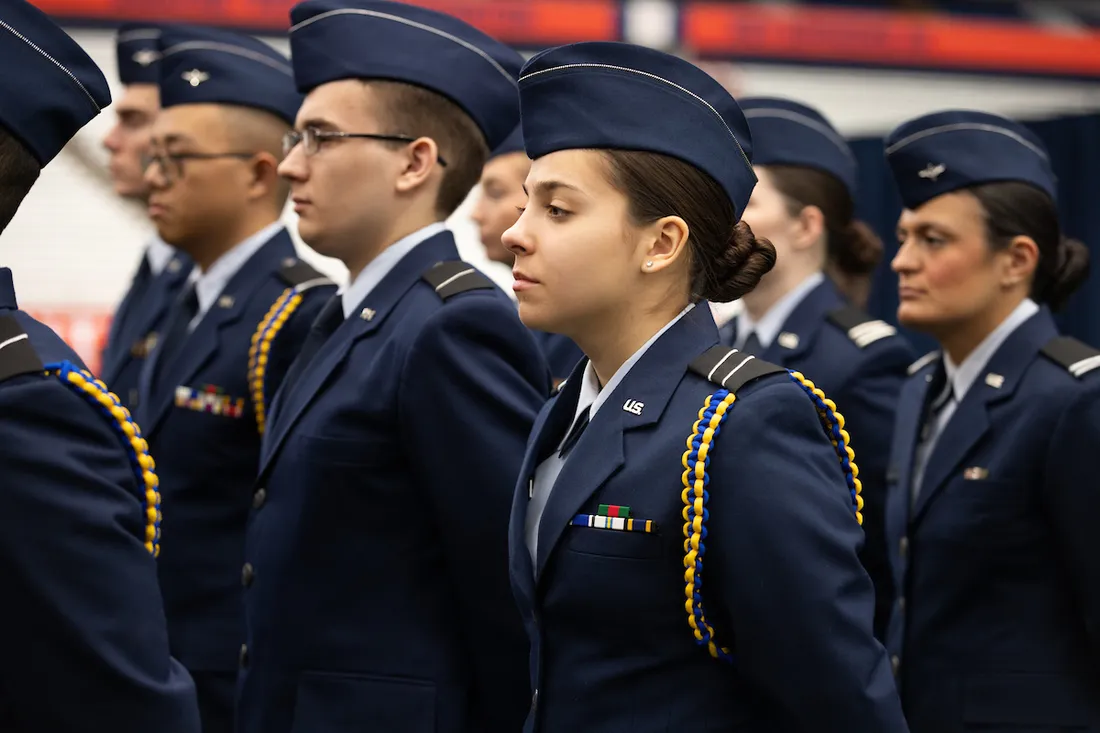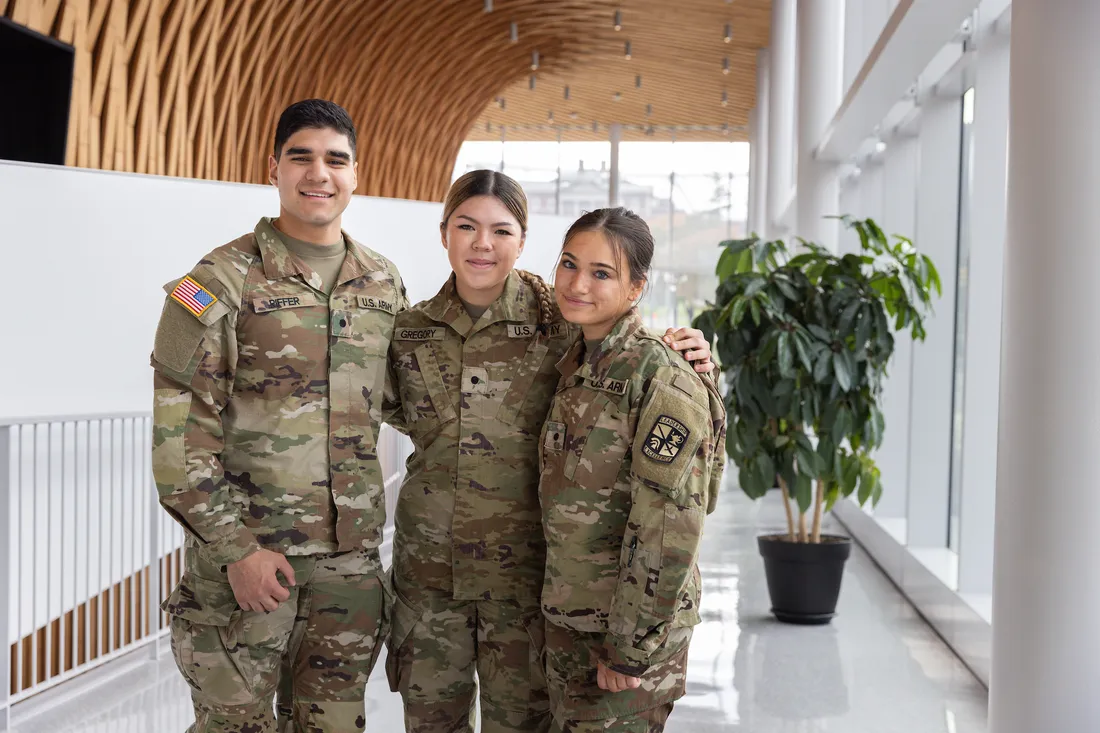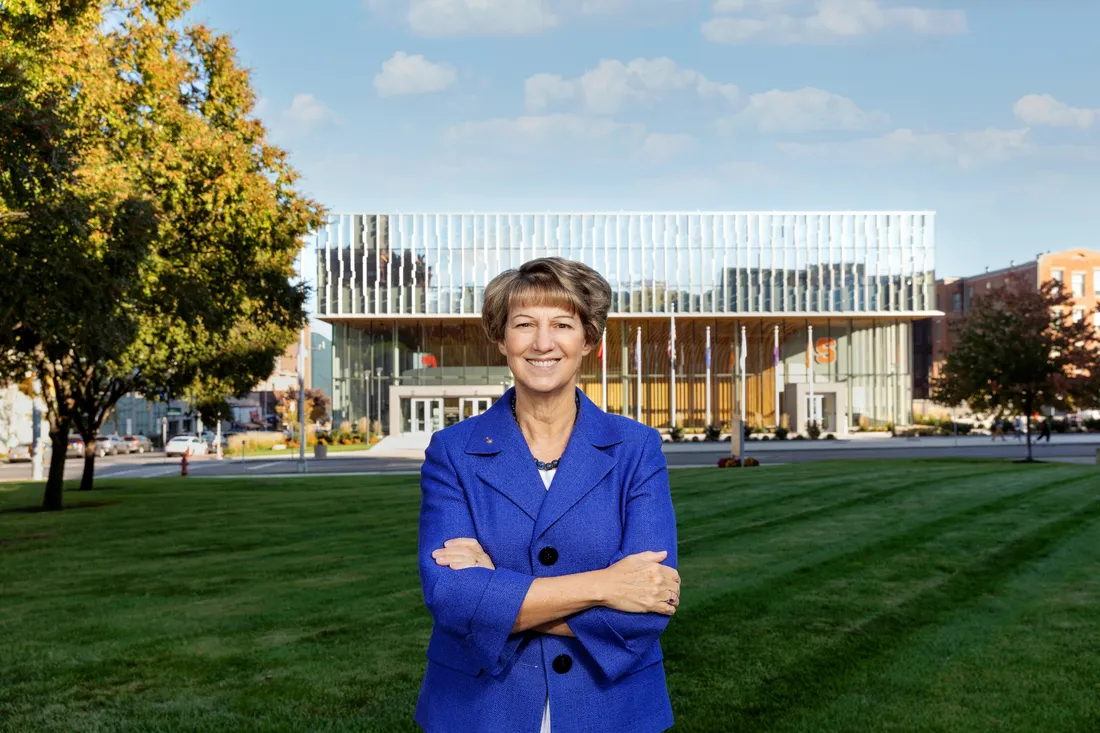
Retired U.S. Air Force Colonel and former NASA space shuttle commander Eileen Collins ’78, H’01 stands in front of the National Veterans Resource Center on a recent campus visit during Orange Central 2021.
When the space shuttle Columbia exploded re-entering Earth’s atmosphere on February 1, 2003, the NASA program found itself at a crossroads. It had already endured the Challenger disaster 17 years earlier and here it was again, facing a second devastating loss that claimed the lives of seven crew members. For Eileen Collins ’78, H’01, the Syracuse University alumna who had risen through the NASA ranks to become the first woman to both pilot and command space shuttle missions, it was a time of personal reckoning. “The Columbia accident did not have to happen,” says the retired U.S. Air Force colonel. “The aftermath was a huge part of my life because I was the commander of the next mission. I don’t ever want to live through that again.”
Collins remembers the stark reality of going to the Johnson Space Center in Houston the following Monday morning and seeing the door closed to the office of her fellow astronauts who had perished. “It really hit home,” she says. “I went to my training manager and said, ‘I’m going to fly this mission, even if it takes five years. I’m not leaving. We’re going to fix the problems, make it safe, and get the shuttle flying again.’”
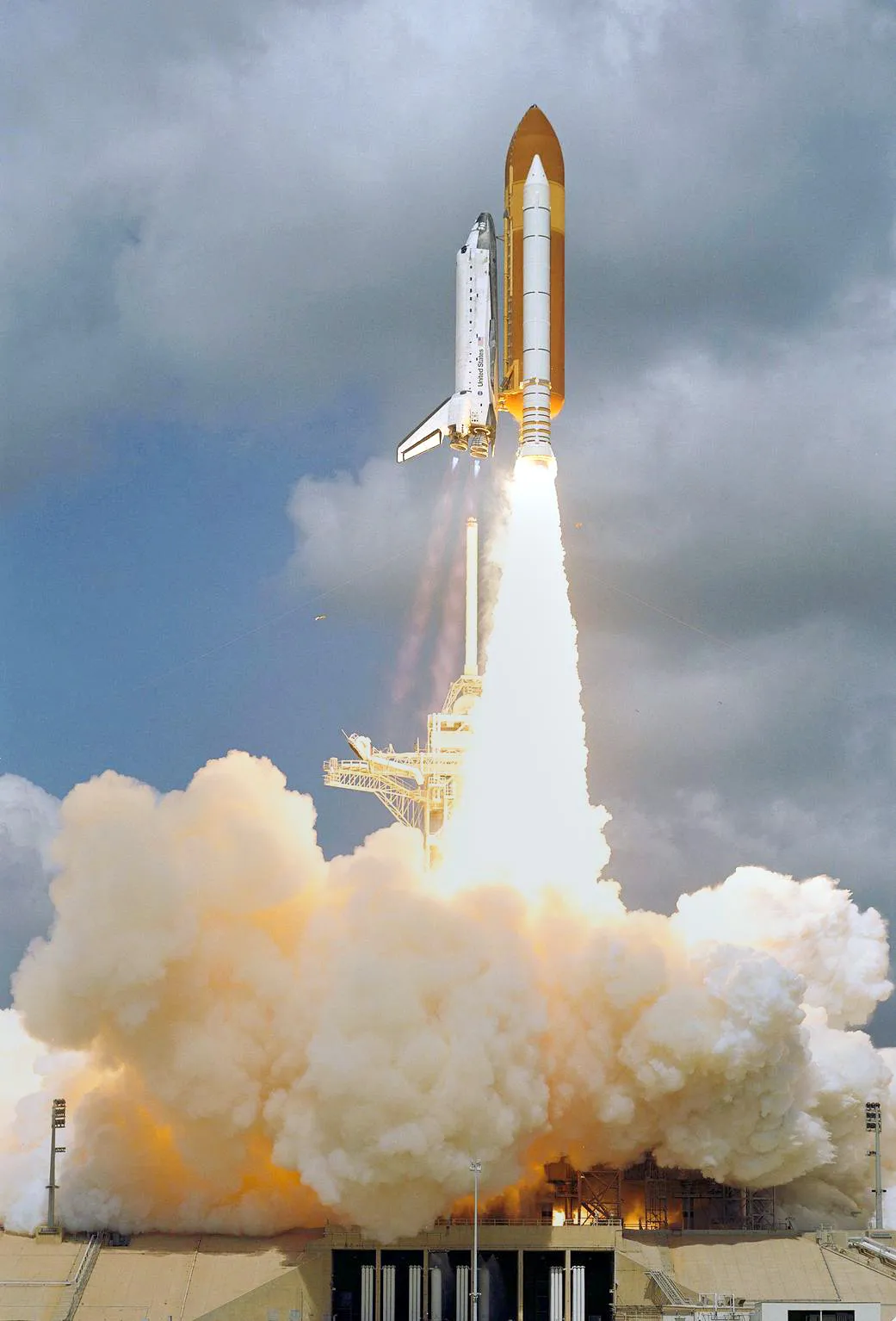
Space shuttle Discovery lifts off from the launch pad on the historic “Return to Flight Mission” on July 26, 2005. As STS-114 mission commander, Collins safely guided the crew to the International Space Station and back. Photo courtesy of NASA.
On July 26, 2005, NASA launched Discovery into orbit. It was the “Return to Flight Mission,” STS-114, and Collins safely guided the space shuttle and its crew to the International Space Station and back. It was her fourth and final space shuttle mission, her second as commander. As a safety measure, the crew introduced the rendezvous pitch maneuver (RPM)—a backflip performed before docking that allowed the space station astronauts to photograph the shuttle’s underside and share the images with NASA engineers to determine whether there was damage to the heat-shield tiles—the culprit in the Columbia tragedy—and other parts. The examination revealed some “gap fillers” between the tiles had popped out—and repairs were done on a spacewalk to remedy the situation. “Whenever a tragedy happens, that’s a time when you can make change for the better because people will be more open-minded to change,” Collins says. “NASA was willing to let us develop the RPM, and our crew was the first to do it. Every shuttle mission after ours that went to the space station did that maneuver.”
For Collins, it was another achievement in a career filled with firsts as an Air Force pilot and astronaut. She recounts the Columbia accident and its aftermath in her new memoir, Through the Glass Ceiling to the Stars: The Story of the First American Woman to Command a Space Mission (Arcade), which was released in October and co-authored with veteran space journalist Jonathan H. Ward. Collins returned to the Syracuse University campus for Orange Central 2021, where she was presented the Military/Veteran Award for exceptional meritorious service and achievement, honored as a “Hometown Hero” at the Orange football game, held a book signing and spoke with student groups from the Air Force ROTC, the College of Arts and Sciences, and the College of Engineering and Computer Science. In the past, Collins addressed graduates as the Commencement speaker and recipient of an honorary doctoral degree in 2001 and was named a 1996 Arents Award winner, the University’s highest alumni honor.
As the first woman shuttle pilot, I wanted to set a good impression that would lead to future opportunities for women.
Eileen Collins ’78, H’01
In writing her memoir, Collins had two main goals: to inspire young people to pursue studies in STEM fields and consider working in the space program or becoming teachers; and, to document history by sharing her experiences and personal perspective of being an astronaut. “On my four missions, I worked with Russians, astronomers and space station scientists,” she says. “I talk about all those experiences and about my mistakes and what I learned from them.”
A Fascination with Flying
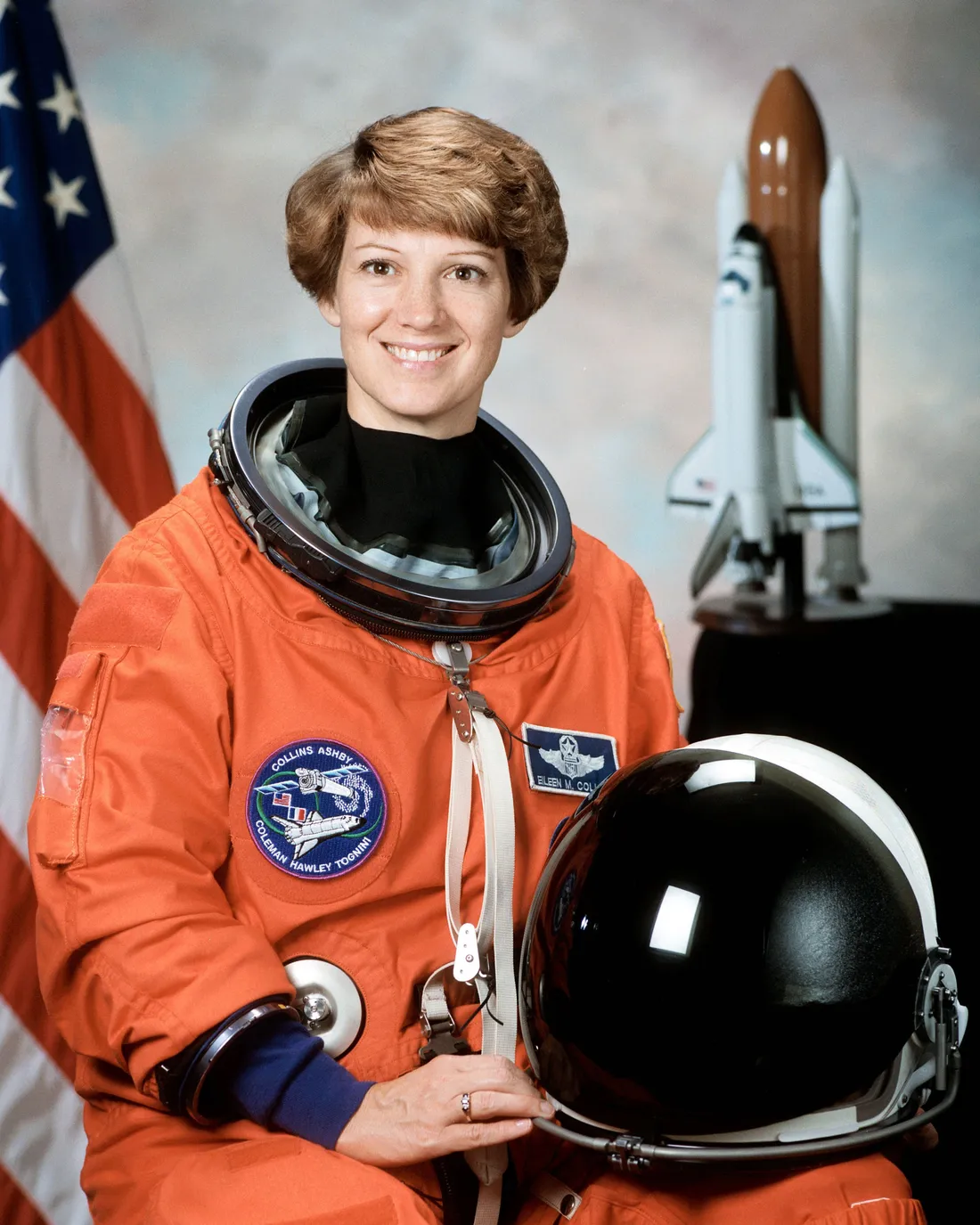
Official portrait of Collins when she was the STS-93 commander. Photo courtesy of NASA.
Without a doubt, Collins says, the most difficult part of the book was writing about her family. One of four children, she grew up in Elmira, New York. Her father was an alcoholic whose behavior made for a troubled homelife. Her parents separated and her mother navigated raising the kids as best she could, but contended with issues of mental and physical health. Despite the difficulties, Collins found love and support from her parents. “What does Eileen want to do?” her father would ask to encourage her. “There is no one else in the world exactly like you!” her mother would tell her. “We are here on this planet to fulfill a need somewhere in the world.”
At a young age, Collins became fascinated with flying and dreamed of being an astronaut. She was in the right place, too. Elmira is home to an airport, the National Soaring Museum and Harris Hill, where she watched gliders sail through the air. Her dad also took the family to the airport to watch planes land and depart. At the library, she consumed every book she could find on aviation. Famous fliers, astronauts and military pilots became her heroes.
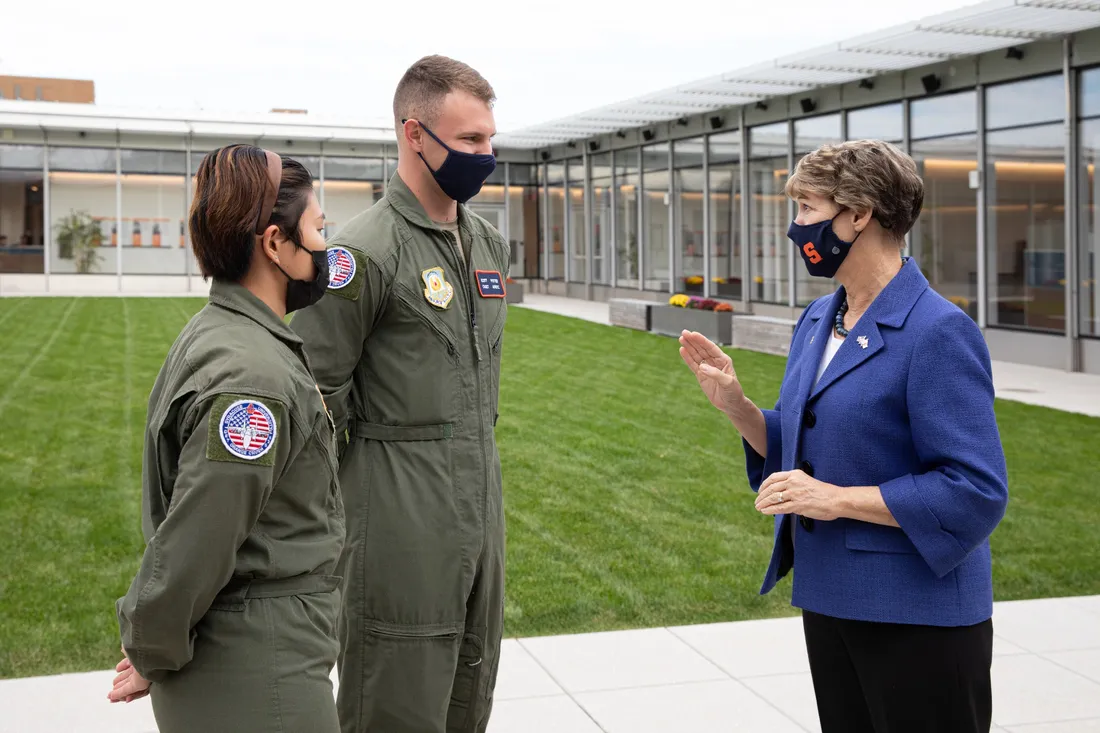
Collins speaks with cadets from the Air Force ROTC in the courtyard of the National Veterans Resource Center during her recent visit to campus.
Collins wanted to get off the ground and embraced the ROTC as her ticket to becoming a pilot. After earning an associate degree from Corning Community College, she accepted an Air Force ROTC scholarship to Syracuse University. She double majored in math and economics in the College of Arts and Sciences and credits the ROTC program with preparing her academically for her career with courses in national security and leadership and management. She also cites the influence of the cadet-run Leadership Laboratory for readying her to become an officer. “I picked Syracuse because the ROTC people were wonderful,” she says. “They were all very welcoming.”
I picked Syracuse because the ROTC people were wonderful. They were all very welcoming.
Eileen Collins ’78, H’01
Taking Flight
Before her senior year at Syracuse, Collins took her first flying lesson in Elmira after saving $1,000 working at various jobs. Following graduation, she was selected for pilot training and headed to San Antonio for a flight screening program. Successful there, she was assigned to Air Force Pilot Training at Vance Air Force Base in Oklahoma. It was the first time in its history that the Air Force accepted women into pilot training right out of college—and Collins was one of eight women in that historic first group. She quickly mastered the T-38, a supersonic jet trainer, and was the first in her class of 40 to fly solo. She also became the first woman T-38 instructor pilot at Vance.
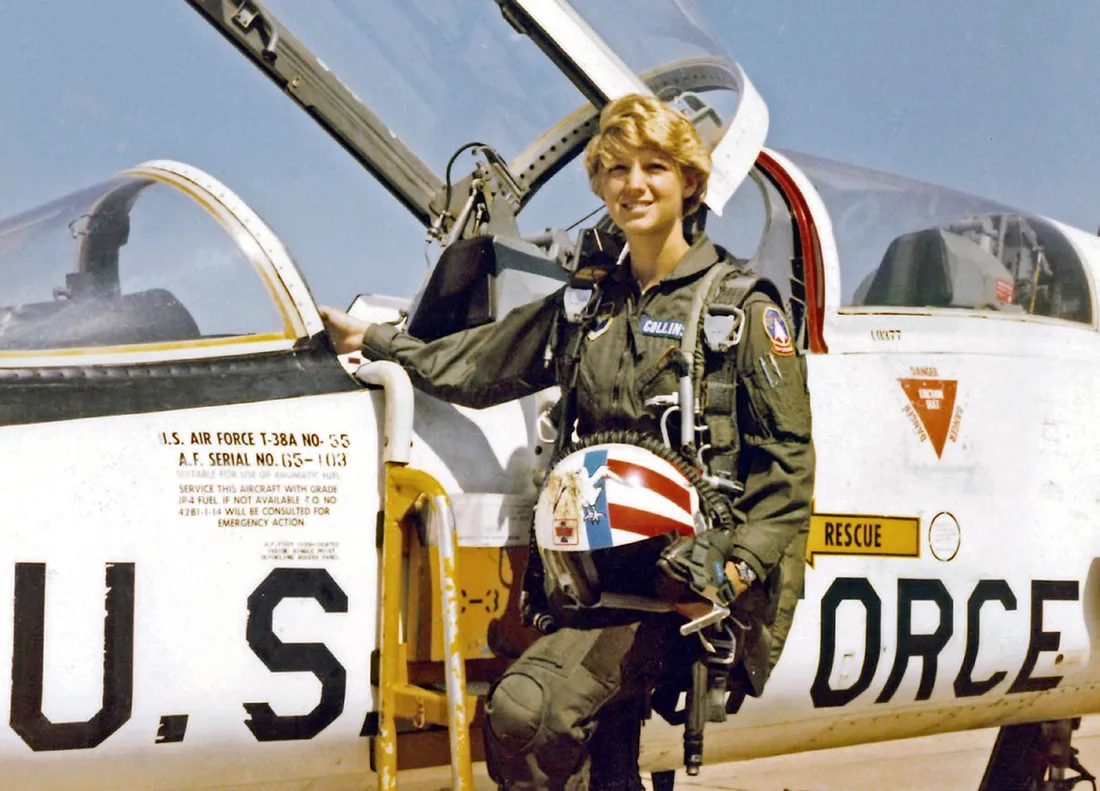
Collins poses with her beloved T-38 when she graduated from flight school at Vance Air Force Base in Oklahoma in August 1979. U.S. Air Force photo courtesy of Eileen Collins.
Collins continued her military career as a C-141 aircraft commander and instructor pilot at Travis Air Force Base in California. She taught math at the U.S. Air Force Academy and was a T-41 instructor pilot. “I felt as a pilot that you needed to be very disciplined,” says Collins, also a disciplined student who earned master’s degrees in operations research from Stanford University and in space systems management from Webster University. “There’s a right and a wrong and not a lot of gray area in the flying world because you need to do it safely since people’s lives are at stake.”
Ready for Liftoff
On January 16, 1990, while attending the Air Force Test Pilot School at Edwards Air Force Base in California, Collins, who’d been flying an A-37 test mission that day, received a message to call NASA’s Johnson Space Center in Houston. The Air Force major had interviewed for a position as an astronaut mission specialist months before. She talked to several people at NASA before connecting with legendary astronaut John Young, who’d walked on the moon and flown the first space shuttle mission in 1981. He told her they wanted her to come to the space center, but never directly said what her role would be. “I figured they had selected me,” she says. “But I didn’t know if I was going to be a mission specialist or a pilot because at that time there were no women pilots.” At the end of the conversation, Young congratulated her and asked if she had any questions. “Am I going to be a pilot or mission specialist?” she asked.
“Pilot,” he said. “You’re going to be our first woman pilot.”
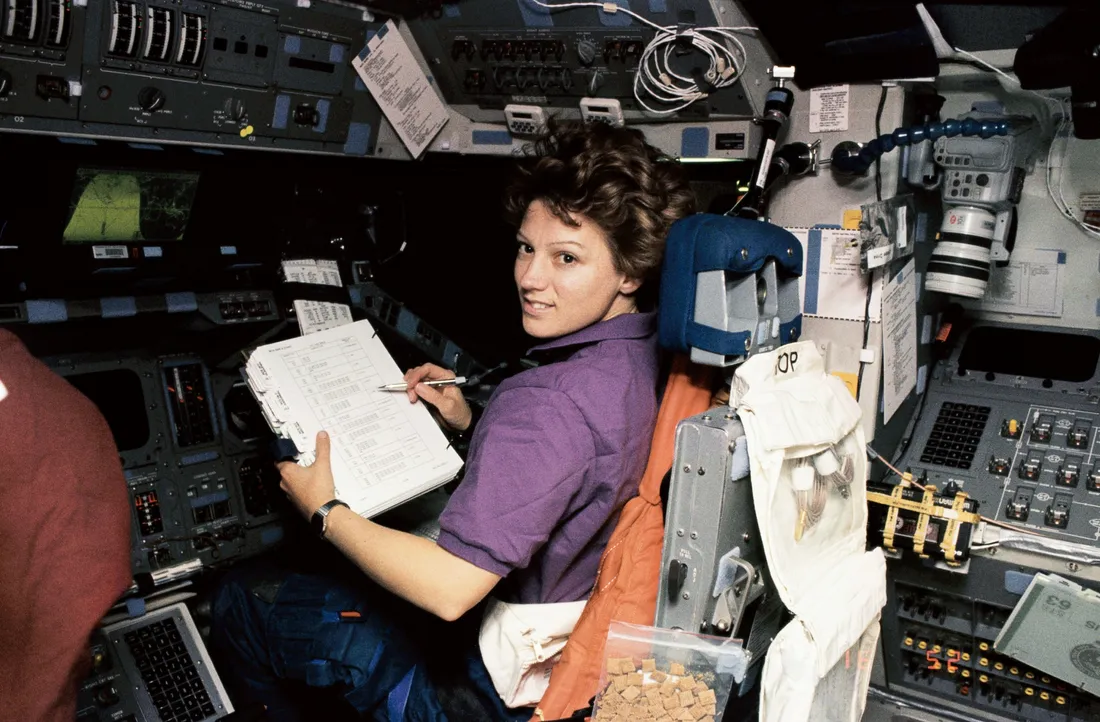
In her first mission as a space shuttle pilot, Collins runs a checklist to troubleshoot Discovery’s leaky thrusters prior to rendezvous with Russia’s Mir Space Station in February 1995. Photo courtesy of NASA.
Collins was relieved by the news, which was accompanied by a sense of challenge for the future. Her long-held dream became reality when she graduated from test pilot school and officially joined the NASA Astronaut Corps in July 1991. As the first woman pilot, she wanted to be the best role model possible and knew she would be scrutinized. She didn’t want to make mistakes and committed herself to studying, practicing and excelling. “As the first woman shuttle pilot, I wanted to set a good impression that would lead to future opportunities for women,” she says.
As Collins demonstrated through four space shuttle missions, she could be counted on to produce an exemplary performance. On February 3, 1995, she embarked on mission STS-63, piloting Discovery to a rendezvous with the Russian space station Mir, the first joint space venture between the two countries. Two years later, she guided Atlantis on STS-84 to a docking with Mir. On her third mission, STS-93, Collins stepped into her role as the shuttle’s first woman commander and led her Columbia crew through the launch of the Chandra X-ray Observatory on July 23, 1999.
Collins accepted the inherent danger of space flight as part of the job. Amid the dangers, however, there was the beauty of space—in particular, seeing our pale blue dot. “I enjoyed looking back at Earth,” she says. “I liked to put my face up against the window and stretch out my arms—I was flying over the planet.”
The Benefits of Space Exploration
Gazing at Earth also instilled in Collins a sense of its vulnerability and the importance of studying the planet’s environment from space. “With all the satellites we have in space, we are seeing Earth from a different perspective,” she says. “We learn about the makeup of our planet, which we could not learn if we weren’t able to go to space.”
We are getting a lot of practice with private companies increasing their rate of flight. That helps the entire space community because we all learn from each other.
Eileen Collins ’78, H’01
Collins continues to be a staunch advocate of space exploration, noting that it improves our understanding of Earth, satisfies our urge to explore, teaches us about our body’s response to microgravity and advances our technological capabilities. She also supports commercial space flight, seeing it as a way to keep moving forward as we seek to travel farther away from the planet and establish outposts on the moon and Mars. “We are getting a lot of practice with private companies increasing their rate of flight,” she says. “That helps the entire space community because we all learn from each other.”
Balancing a Storied Career with Normal Life
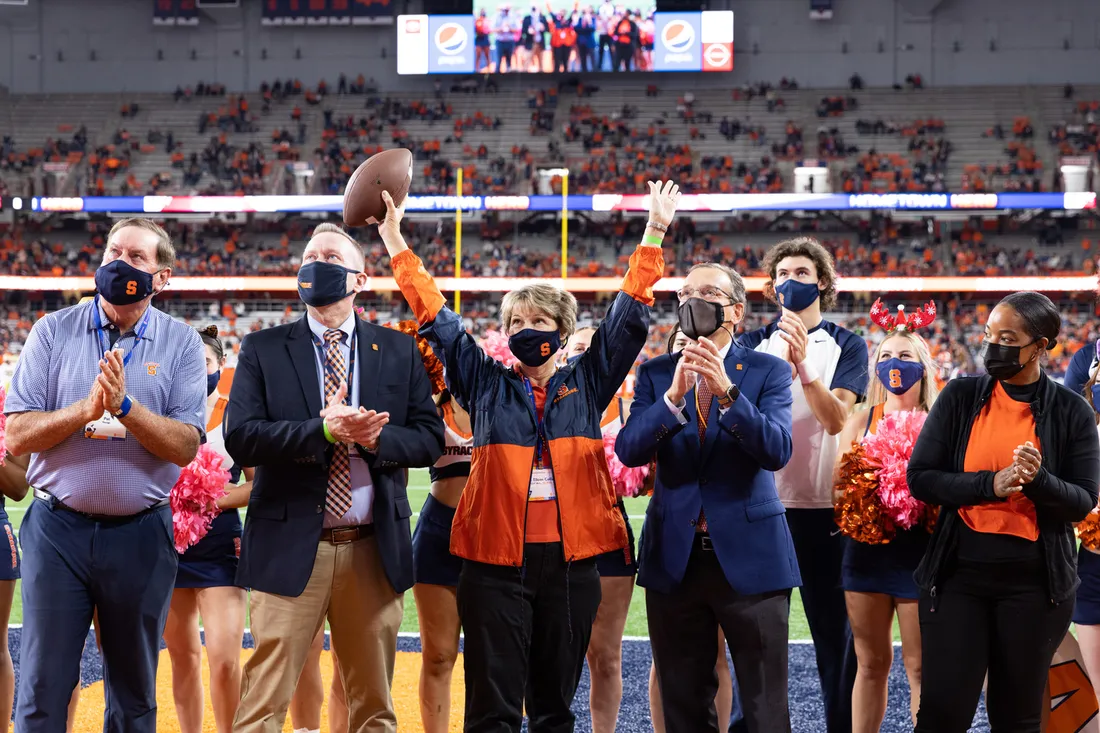
Collins responds to cheers from the crowd as she’s honored as a “Hometown Hero” at the Syracuse University football game during Orange Central 2021.
In 2005, Collins retired as a colonel from the Air Force. A year later, she closed out her career with NASA. All told, she clocked more than 6,751 hours in 30 different kinds of aircraft and over 872 hours in space. Her honors are many: U.S. Astronaut Hall of Fame, National Women’s Hall of Fame, Defense Superior Service Medal and Distinguished Flying Cross, among others.
Since retiring, Collins has worked as a motivational speaker and consultant and currently serves on three boards, including the Astronaut Memorial Foundation Board of Advisors. She believes strongly in the responsibilities of being a role model and in her commitment to inspiring young people. She believes, too, in being humble—a guiding force throughout her extraordinary career. She enjoys swimming, hiking and reading biographies and wants to maintain balance between being a world-famous astronaut and a wife and mother living an ordinary life. “When I’m doing the astronaut role, I feel like I have to put on the Marvel character, woman commander,” she says. “But then I like to go and be Eileen, just a regular person.” An extremely down-to-earth one at that.

